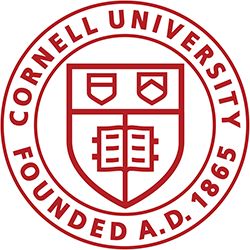
ISSUE: New apple cultivars with improved fruit quality will lead to increased consumer enjoyment and consumption and will contribute to the profitability and sustainability of the U.S. apple industry. However, breeding new apple cultivars is inefficient and slow, taking 15 to 25 years from the initial cross to cultivar release. Predicting which individuals will be the best parents is difficult. Thousands of progeny individuals must be grown and evaluated in the orchard to identify the few with commercial potential.
WHAT HAS BEEN DONE: DNA tests were developed to predict apple fruit skin color, firmness, crispness, juiciness, acidity, and storability. These new genetic tests enable apple breeders to select the best parents to combine and the best seedlings to advance, reducing the need to grow out and sort through thousands of seedlings with unacceptable fruit quality.
Using this strategy, called Marker-Assisted Breeding, apple breeders can more efficiently, accurately, and creatively develop superior apple cultivars that meet the needs and desires of consumers and producers.
IMPACT: As a result of genetic testing in the University of Minnesota apple breeding program:
- A set of parents chosen for crossing (out of 150 prospective parents), partly based on the results of DNA diagnostic tests, have increased potential to transmit red skin color, bitter pit resistance, desirable levels of acidity, exceptional crispness, long storage potential related to ethylene production, and resistance to apple scab disease.
- The power of marker-assisted parent selection is apparent in the following example: Crosses planned in 2012 using only DNA test results on parents for skin color saved the University of Minnesota apple breeding program approximately $20,000 in future costs of caring for seedlings in the breeding orchard that have no commercial potential due to undesirable skin color.
Between May and July 2013 about 1600 seedlings were DNA tested for crispness, skin color, storage potential, and apple scab disease at a cost of $5000. Approximately 900 seedlings were culled based on the results of the genetic tests. Our cost for carrying a seedling to fruiting is about $20; therefore, this DNA testing yielded a net savings of about $13,000.

ISSUE: New apple cultivars with improved fruit quality will lead to increased consumer enjoyment and consumption and will contribute to the profitability and sustainability of the U.S. apple industry. However, breeding a new apple cultivar is slow and inefficient, taking 15 to 25 years. Predicting which selections will be the best parents is difficult. Thousands of progeny individuals must be grown and evaluated in the orchard to identify the few with commercial potential.
WHAT HAS BEEN DONE: DNA tests were developed to predict apple fruit skin color, firmness, crispness, juiciness, acidity, and storability. These new genetic tests enable apple breeders to determine the best parents to combine and the best seedlings to advance, reducing the need to grow out and sort through thousands of seedlings with unacceptable fruit quality.
Using this strategy, called Marker-Assisted Breeding (MAB), apple breeders can more efficiently, accurately, and creatively develop superior apple cultivars that meet the needs and desires of consumers and producers.
IMPACT: As a result of genetic testing in the Washington State University apple breeding program:
- Parents are chosen partly based on the genetic potential to transmit key attributes of excellent texture and long storability, using new DNA information about the family pedigree and trait characteristics of WSU apple selections and new cultivars.
- Twenty-three crosses were designed based on the increased potential for transmitting desirable attributes to their progeny according to results of parent DNA testing.
- More than 7000 seedlings were discarded prior to field planting in 2011 and 2012 based on the prediction that they would have inferior texture and storability. The estimated total resource saving from this seedling culling was $98,000.
- In 2013, 9000 seedlings were DNA-tested, resulting in a third eliminated.
A seedling planting system was designed and implemented to streamline the application of MAB. This new system ensures that the genetic test results are reliably matched with each of the thousands individual seedlings that are sampled – vital for confidently making culling decisions on so many seedlings.

ISSUE: New apple cultivars with improved fruit quality can help increase consumption of a very popular fruit and add to healthy choices in battling child and adult obesity. New cultivars will also contribute to industry profitability and sustainability, especially new cultivars suited to the expanding fresh-cut market.
WHAT HAS BEEN DONE: DNA tests were developed to predict apple fruit skin color amount, firmness, crispness, juiciness, acidity, and storability. These new genetic tests enable apple breeders to select parents with the greatest likelihood of transmitting favorable traits to their offspring, reducing the need to grow out and sort through thousands of seedlings with unacceptable fruit quality.
This strategy, Marker-Assisted-Breeding, and the genetic analyses based on phenotyping across sites, is adding to our understanding of key traits and their interrelationships.
IMPACT: As a result of genetic testing in the Cornell apple breeding program:
- Crosses were designed beginning in 2011, based on genetic knowledge of each parent’s potential to transmit desirable traits to their offspring. Seedling screening, to begin in 2013 for several progenies, is also now enabled.
- Knowledge of key traits and their inheritance have changed our choices in parent selection. We expect that our use of this knowledge to date and into the future will be reflected in fewer undesirable seedlings and greater genetic gain. These enhancements should result in high quality advanced selections – tomorrow’s future cultivars.
- Understanding genomic regions influencing multiple traits, such as the one discovered for beneficial phenolic compounds, crispness, juiciness, acidity, bitter pit incidence, fruit size, and harvest maturity, is helping us make more efficient increases in genetic gain.
